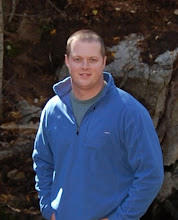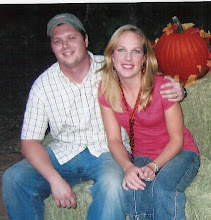My reverie is interrupted as I pull into the clinic parking lot and I notice Cole, one of the technicians, has already arrived and is getting out of his truck. Cole is from a town east of us and has just finished his first year at OSU. He is an animal science major with a pre-vet option and is working at the clinic this summer to gain veterinary experience for his vet school application.
“Hey Cole,” I holler as I get out of my truck. “Do you mind going out on a call with me to pull a calf?”
“Yeah sure,” he replies. “What do you need me to get?”
“Can you get a bucket, fill it with Chlorhexidine solution, and drop an OB chain in as well? I’ll get a tray and the drugs we’ll need,” I say as I unlock the clinic door.
We load the instruments and medication that we need into the truck and pull away from the clinic as the rest of the staff begins to arrive. Cole has helped the other veterinarians in the field a few times before, but it is our first time to work together and he seems eager to prove his ability. I can relate. This will be the first time I have pulled a calf on my own, although I have assisted numerous times. We race down the country roads along the edge of town and are soon to the address of the call.
“I think this is the place,” I say as we pull into the driveway. “The guy said he had her in a pen out behind the house.”
At the sight of the neat brick home, I am hopeful that Mr. Smith has a workable set of facilities with which to restrain the heifer (maybe an alleyway or even a chute if we are lucky). As we drive around to the rear of the house and into the pasture, my hopes are dashed. The facilities consist of a pen made up of stock panels, and its dimensions are sixteen feet by twenty feet. No alleyway or chute is in sight. Clearly I am expected to catch the heifer by roping her and tying her to the side of the pen.
I am to find that this scenario is typical in rural Oklahoma. Many people move to the country, buy a small acreage of land and a few head of cattle to put on it, and never bother to purchase adequate fencing and a squeeze chute to facilitate the animal’s medical needs. When they need veterinary services, it is expected that the vet be able to capture and restrain the animals entirely with the tools at his disposal. This is a bit of a problem for several reasons. One is that I am abysmally terrible at roping anything, particularly if that anything is in the least bit mobile. I am not, nor will I ever be considered a roper. Lariat Roping 101 was not a class that was available at veterinary school, and I did not grow up a rodeo cowboy. I grew up on a small farm that was equipped with an alleyway and squeeze chute. We didn’t have to rope things because we had proper facilities.
The second problem is that even if I am able to rope the damn cow, now I am a two-hundred pound man on foot attached by a thin length of braided nylon rope to a thousand pound bovine that is rather pissed at having a tightening loop around her neck. The cow usually responds by either running directly toward me, in which case I promptly drop the rope and look for something to climb, or she runs directly away from me, in which case I become the first contestant up competing in the very under appreciated sport of pasture skiing. The owners of the cattle never think about this. Veterinarians should all be cowboys. You ever notice that the cowboy that rides around the range roping crap is riding, as in on a horse? It makes a pretty damn big difference if you are on horseback when you set out to rope something. Seeing as how I don’t now nor ever plan on owning a horse, and I wouldn’t haul it around on calls even if I did, my roping is not likely to get any more successful in the future.
That being said, the heifer in question today is in a small enough pen that I am able to toss a loop around her head and manage to quickly get the end of the rope wrapped around the fence post. With Cole urging her forward, we get her snubbed up to the post, get a rope halter around her head and tied off so that I can now begin my physical examination. The head and two front feet of the fetus are clearly visible protruding from the vulva. The calf’s tongue lolls out of its mouth lifelessly.
“Well, Mr. Smith, you were right, it is definitely dead,” I say. “We’ll need to get it out if we are going to save the mama.”
As I pull on a pair of shoulder-length plastic OB sleeves, Cole asks me, “Hey Doc? She sure looks stirred up, are you gonna be okay getting up behind her?”
I eye the heifer warily as I pour lubricant over my gloved hands and forearms. She is straining against the rope, setting back with all her weight on the halter, her tail whipping back and forth angrily in agitation. “I guess we’ll soon find out,” I say with resignation.
I ease up behind the heifer and catch hold of her tail as it whips past me. As soon as my hand closes around the tail the heifer lashes out with a hind leg in a vicious kick that would have sent me flying had it made contact. Still holding on to the tail with my right hand, I grit my teeth and step in closer, and ease my left hand as gently as possible into her vulva. Fortunately for me, the heifer makes no more attempts to kick me as I examine her birth canal to check the size of the fetus. It feels like there is enough room between the calf and the heifer’s pelvis to deliver the fetus vaginally, so I motion to Cole to bring up the OB chains and calf puller. At that time the heifer lifts her tail and squirts a heavy stream of urine down my left side, soaking me from armpit to knee. The warm liquid soon soaks through the fabric of my coveralls and begins to run down my torso. Glad I didn’t take a shower this morning. They didn’t put this on the vet school recruiting poster.
Dripping with urine, I loop the metal chains over the front feet of the calf as Cole hooks up the calf puller, an instrument consisting of a hand-operated wench mounted on the end of a long pole at the other end of which is a u-shaped plate that fits against the back of the cow. We get the instrument in place and hook the end of the wench to the chains around the calf’s feet. Cole works the hand crank and begins pulling the calf at my signal. The slack is taken out of the wench cable and the calf’s legs protrude ever so slightly from the back of the cow, but then no more progress is made. The pole of the calf puller begins to bend with tension, but the calf is wedged fast and is not coming any farther. The heifer groans in distress and sinks to her knees before laying over on her side in agony. Fearing to pull anymore, I signal for Cole to release the tension from the puller. Pulling too hard on a fetus that is wedged within the birth canal can put too much pressure on the obturator nerves that run within the pelvis, causing temporary or even permanent paralysis to the cow’s hind legs.
We make several more attempts in vain before I turn to Mr. Smith, “There is not enough room for it to come vaginally. We need to perform a fetotomy. If we can take a leg off the calf, we should have enough room to deliver the rest of the body. I don’t have all of the equipment that I need to perform this procedure, but I’ll call back to the clinic and see if someone can bring it to us.”
I walk back to my truck to retrieve my cell phone, mentally cursing in frustration. It would sure be nice if they had decided to equip me first before they sent me out into the field! Novel idea! Don’t I look professional! I explain the situation to the receptionist at work, and she tells me that Dr. L is out on another call close by and she’ll have him come by when he is finished and I can use the tools from his truck, which is equipped with a fully stocked vet box.
Hanging up the phone, I walk back over to the corral where the three of us attempt to make small talk for what seems like forever. As the morning sun begins to get warmer, I discover that I smell strongly of piss and birthing fluids. Finally, I see Dr. L truck pulling down the driveway. He pulls down by the corral and gets out of the truck, looking a bit annoyed to have been sent to bail out the rookie.
“We tried to pull it a couple of times,” I explain as he looks at the fetus protruding from the heifer, my chains still attached to the feet. “It won’t budge and I think we might need to do a fetotomy.”
“Let me give it a try,” Dr. L says quietly.
Dr. L hooks the calf-puller back to the chains that are attached to the calf’s feet and proceeds to deliver the calf with little difficulty. I look on in shock. He didn’t do anything differently from what I had been trying for the past half hour. He even used the chains that I had left attached. Have you ever tried with all of your strength to open a pickle jar and then handed it off to someone else and they open it with ease, making you look like a total fool? Pretty sure that was what just happened. Son of a gun!
I give the heifer an injection of penicillin to prevent infection, an injection of oxytocin to help her pass the afterbirth, and make out the bill for the owner to pay. As I am about to drive away, Mr. Smith looks at me and says, “Don’t worry son, you’ll get the hang of it soon.”
Flipping fantastic! Why did I want to be a vet?
Cole and I discuss what just happened as we drive back to the clinic. “Did you see him do anything different than what we did?” I ask.
“Not a thing, man. He just hooked up and pulled it right out,” Cole says incredulously. “When we tried I thought the pole was going to snap in half.”
Subscribe to:
Post Comments (Atom)







I couldn't contain my laughter on the sporty "pasture skiing" description of roping a calf. I HAD to read it aloud to my hubby, because he was wondering why I was laughing out loud. Pretty funny and witty, your posts, Colby. Good stuff!
ReplyDeleteYour stories crack me up!! It reminds me of my first days in practice, except I had a jackass boss that was never around to lend advice or bail me out!
ReplyDelete